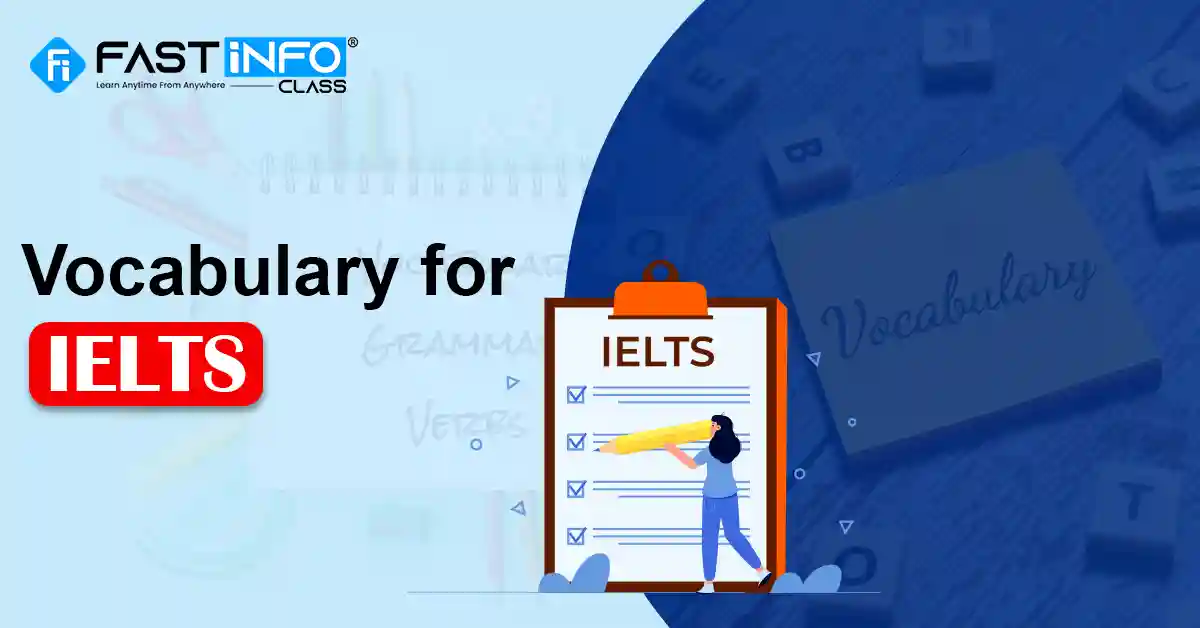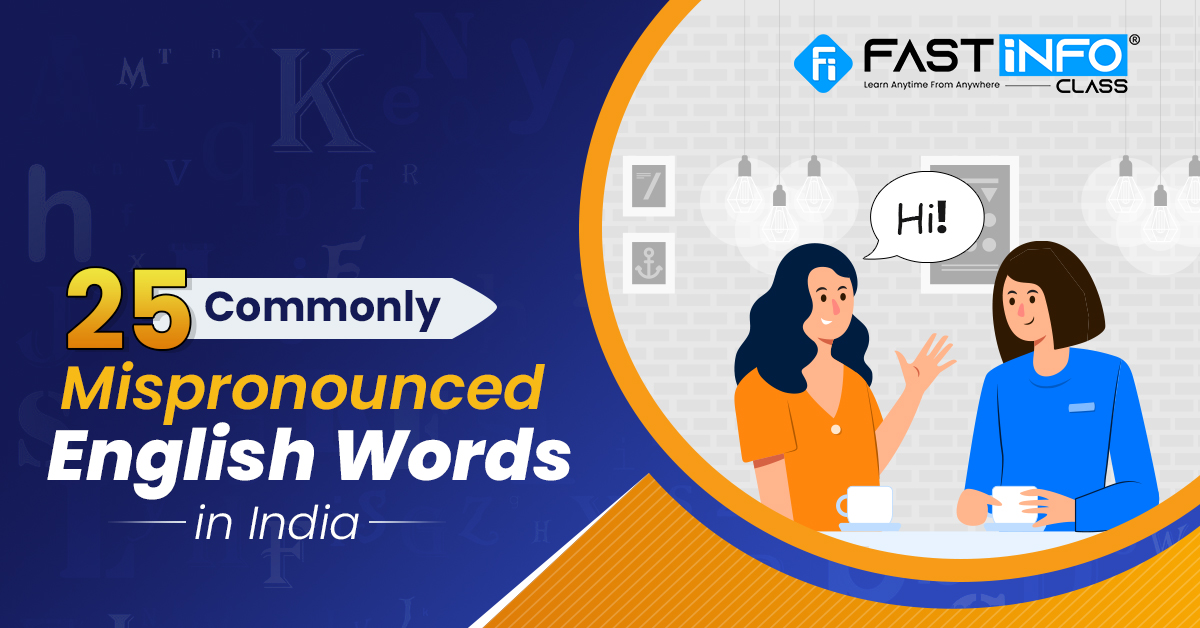10 Effective Ways to Improve IELTS Vocabulary
05 Dec, 2025

 By FastInfo Class
Published On 22 Jul 2025
Category IELTS
By FastInfo Class
Published On 22 Jul 2025
Category IELTS
If you are struggling to organise your thoughts in IELTS Writing Task 1 and 2, you are not alone. Many test-takers lose marks, not for poor ideas, but for poor structure. A clear, well-organised response can boost your band score significantly. Whether it’s describing a graph or writing an opinion essay, knowing how to plan and present your ideas properly is key. This piece of article will provide you with detailed information on how to organise your IELTS writing task 1 & 2 responses.
The IELTS Writing section tests your ability to express ideas clearly, logically, and accurately in written English. It is divided into two tasks and lasts for 60 minutes in total.
Your IELTS writing is judged on Task Achievement, Coherence and Cohesion, Lexical Resource, and Grammatical Range and Accuracy. Practising regularly, learning how to structure responses, and expanding your vocabulary can significantly improve your band score. Understanding the format and what examiners look for is the first step towards writing with confidence.
Organising your IELTS Writing Task 1 response properly is just as important as understanding the data. Whether you are describing a chart, graph, map, table, or process diagram, a well-structured answer helps the examiner follow your explanation. Many candidates have strong grammar and vocabulary, but lose marks because their writing lacks structure. Here’s a simple and effective way to organise your Task 1 response:
1. Introduction (1 paragraph)
Start by paraphrasing the question. This means rewriting the question statement in your own words without changing the meaning. Avoid copying the question directly, as that won’t earn you marks. Use synonyms and change sentence structures.
Example:
2. Overview (1 paragraph)
This is the most important paragraph. It gives a summary of the main trends, patterns, or changes shown in the visual. Avoid details, numbers, or specific data here.
Example:
3. Body Paragraph 1 (Details – Part 1)
Start giving detailed information. Focus on the first half or one set of data points. Use comparison, contrast, and grouping. Include numbers, percentages, and years when needed.
Example:
4. Body Paragraph 2 (Details – Part 2)
Continue with the rest of the data. You can show changes over time, group similar trends, or compare differences.
Example:
IELTS Writing Task 2 requires you to write a formal essay of at least 250 words in 40 minutes. You are expected to present a clear opinion or argument, support it with logical ideas, and organise your response in a structured way. A well-organised essay not only helps the examiner understand your points but also boosts your band score, especially in the Coherence and Cohesion and Task Response criteria. The following details include how to organise your IELTS Writing Task 2 essay step-by-step:
1. Introduction (40–50 words)
Start your essay with a short and clear introduction. This paragraph should do two things:
Example:
2. Body Paragraph 1 (Main Point 1)
This paragraph should present your first main idea or argument. Start with a clear topic sentence, followed by supporting points and real-life examples.
3. Body Paragraph 2 (Main Point 2)
Now, present your second main point. This could be an opposing view (if discussing both sides) or another reason to support your opinion. Again, use clear logic and examples.
4. Conclusion (30–40 words)
Summarise your main points and restate your opinion clearly without repeating the introduction word-for-word.
Using the right vocabulary and linking words in your IELTS Writing Task 1 and Task 2 responses can significantly improve your Coherence and Cohesion and Lexical Resource scores. These help your ideas flow naturally and make your writing more structured and professional.
Useful Vocabulary for IELTS Writing
1. For Describing Trends (Task 1):
Example:
2. For Giving Opinions (Task 2):
Example: In my opinion, online learning offers more flexibility than traditional classrooms.
3. For Explaining Causes or Effects:
Example: Due to high tuition fees, many students prefer online education.
Linking Words to Improve Structure
Example Sentences:
Scoring well in the IELTS Writing section is not just about using big words or writing long essays. It’s about clarity, structure, grammar, and sticking to the question. Many test-takers lose valuable marks because of small but repeated errors that can easily be avoided. Here’s a human-friendly, simple guide to the most common mistakes—and how to fix them.
1. Not Understanding the Question Properly
2. Missing the Overview in Task 1
3. Lack of Structure in Task 2
4. Overusing Complex Vocabulary
5. Grammatical Errors
6. Not Meeting the Word Count
7. Using Informal Language
8. Repeating the Same Words
9. Not Supporting Your Ideas
10. No Proofreading
Mastering IELTS Writing Task 1 and Task 2 isn’t just about grammar or big words—it’s about clear structure, smart planning, and simple language. When you organise your ideas well and use the right vocabulary and linking words, your writing becomes easier to read and more impactful. Avoiding common mistakes, practising regularly, and understanding what the examiner expects can help you move closer to your desired band score. In this article, you have learned how to organise your IELTS writing task 1 & 2 responses. Visit the Fastinfo Class, join the IELTS preparation course and crack IELTS.
Start with an introduction, then describe key trends or data in an overview, and finally explain details with comparisons in body paragraphs.
Follow a 4‑paragraph structure: introduction, two body paragraphs with clear arguments, and a conclusion summarising your opinion.
Task 1 should be at least 150 words, focusing on key features without unnecessary details. Always stay concise and clear.
Use linking words like however, therefore, in contrast, moreover to connect sentences smoothly and improve coherence in your writing.
Yes! Spend 2–3 minutes planning your ideas and structure. This saves time, improves clarity, and avoids missing key points.

10 Effective Ways to Improve IELTS Vocabulary
05 Dec, 2025

Common IELTS Speaking Topics & Questions for 2025-2026
02 Dec, 2025

Common Idioms and Phrases for IELTS
02 Dec, 2025

Best Conversation Topics In English For Daily Use
02 Dec, 2025

Top 6 Tips on How to Improve English Speaking Skills
18 Nov, 2025

Daily English Conversation Practice for Beginners: 50 Useful Topics
29 Jun, 2023

Must Read Novels to Improve English for Beginners to Advanced
21 Feb, 2023

Top 15 Spoken English Books to Enhance Your Fluency
09 Sep, 2023

English Speaking Course for Beginners - Everything you must know
22 Sep, 2021

25 Commonly Mispronounced English Words in India
26 Apr, 2024